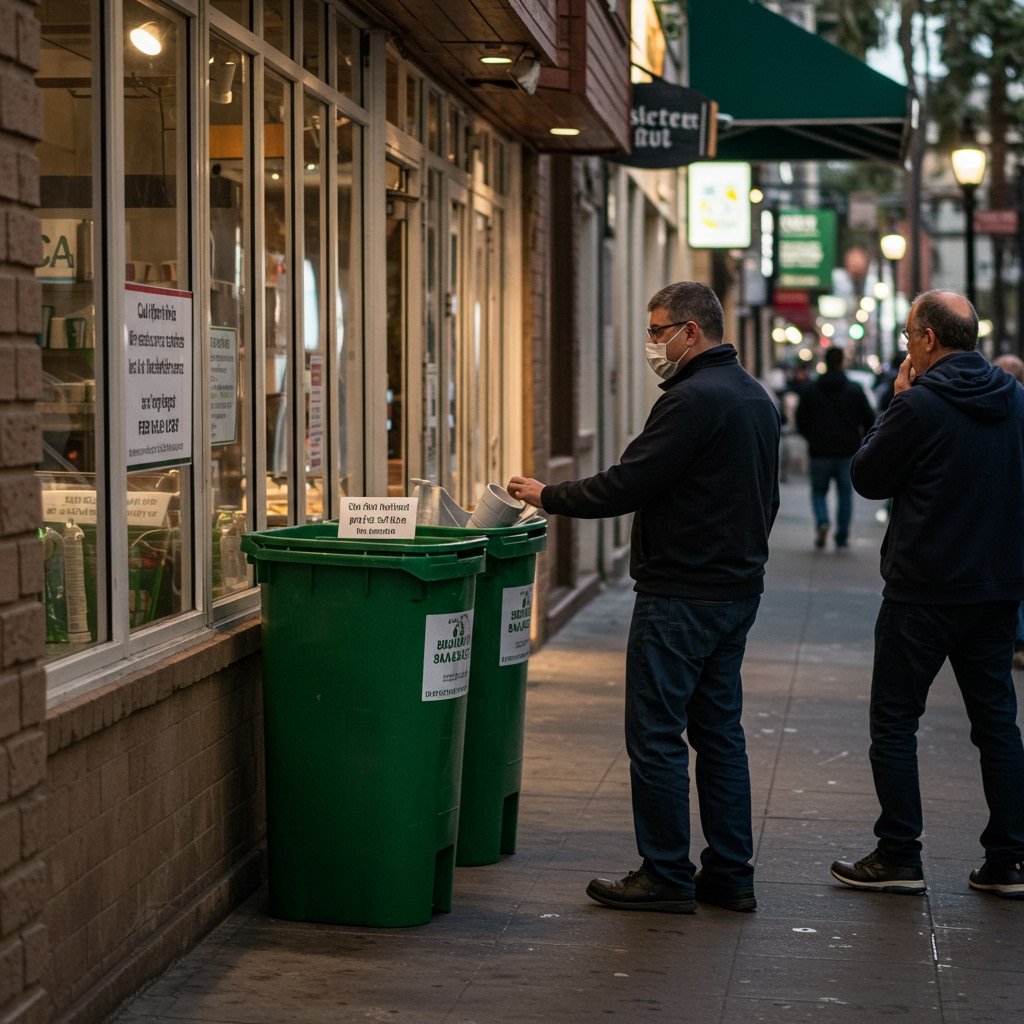Sacramento, CA — California is poised to significantly accelerate its climate action efforts with a major expansion of its statewide organic waste diversion mandate. Effective February 10, 2025, a critical provision of Senate Bill 1383 (SB 1383) will now require restaurants across the state to participate in organic waste collection services, marking a substantial shift in waste management practices for the food service industry. This regulatory update targets restaurants generating more than 2 cubic yards of solid waste per week, encompassing a broad range of establishments from large chains to independent eateries meeting the volume threshold.
The Mandate Takes Effect
The implementation date of February 10, 2025, is a key milestone for SB 1383, a law initially passed in 2016 with phased-in requirements for various sectors and jurisdictions. This particular phase specifically brings restaurants that meet the specified waste generation volume under the mandate’s umbrella. The requirement is straightforward: these businesses must subscribe to and participate in an organic waste collection service provided by their local jurisdiction or hauler. This service is designed to separate food scraps, landscape trimmings, and other organic materials from traditional landfill waste streams. The definition of “organic waste” under the law is broad, primarily focusing on food waste from preparation and plate scrapings, as well as any green waste generated on the premises.
Before this expansion, while many jurisdictions had voluntary programs or mandates affecting other sectors, the full weight of SB 1383 is now extending more directly to a significant portion of the restaurant industry. The 2-cubic-yard-per-week threshold for total solid waste (which includes mixed waste, recyclables, and organics) is calculated weekly and determines eligibility for the organic waste service requirement. Businesses below this threshold may still be encouraged or required by local ordinances to participate, but the state mandate specifically applies to those exceeding the volume.
Why Divert Organic Waste?
The primary objective behind this rigorous push for organic waste diversion is environmental: the reduction of potent greenhouse gas emissions. When organic materials like food scraps and green waste decompose in traditional landfills, they do so anaerobically (without oxygen), producing significant amounts of methane gas. Methane is a greenhouse gas many times more potent than carbon dioxide over a 20-year period, contributing substantially to climate change. Landfills are among the largest sources of methane emissions in California.
By diverting organic waste through separate collection programs, these materials can be sent to facilities where they are processed through controlled methods like composting or anaerobic digestion. Composting breaks down organic matter aerobically, producing nutrient-rich soil amendments and minimal methane. Anaerobic digestion captures methane (often called biogas) which can then be used as a renewable energy source. The statewide mandate on restaurants is expected to contribute significantly to California’s ambitious goal of reducing organic waste disposal in landfills by 75% below 2020 levels by 2025, a key target of SB 1383.
Implementation and City Response
The responsibility for implementing and enforcing the SB 1383 mandate falls largely upon California’s cities, counties, and special districts. These local jurisdictions are tasked with ensuring that businesses, including restaurants meeting the threshold, have access to organic waste collection services and are complying with the regulations. Cities across the state, including major metropolitan areas like Los Angeles and San Francisco, have been actively preparing for and are now rolling out enforcement mechanisms and providing support resources.
These local initiatives often include developing outreach and education programs to inform businesses about the new requirements, setting up collection infrastructure (such as providing bins or coordinating pickup schedules), and establishing compliance monitoring procedures. Jurisdictions may also offer technical assistance to help businesses assess their waste streams and implement proper sorting practices. The nature and extent of resources vary by location, reflecting the diverse operational landscapes of California’s 482 cities and 58 counties.
Challenges for the Industry
While the environmental benefits of organic waste diversion are widely acknowledged, the implementation of the mandate presents notable challenges for the restaurant industry. Smaller independent eateries, in particular, have cited potential financial burdens and logistical challenges in adapting to the new requirements. For businesses operating with tight margins, the cost of new collection services – which may be an additional fee or an adjusted waste bill – can be a significant concern.
Logistical hurdles include finding space for new collection bins specifically for organic waste, training staff on proper sorting procedures (which requires consistent effort and oversight), managing potential odor issues, and coordinating new collection schedules alongside existing waste and recycling pickups. Some older establishments or those with limited space may find it particularly difficult to accommodate the necessary infrastructure changes. These challenges highlight the need for clear guidance, accessible resources, and potentially financial incentives or support programs from state and local authorities to ensure a smooth transition for all affected businesses.
State Projections and Outlook
Despite the anticipated challenges, state officials remain optimistic about the potential impact of this expanded mandate. They project that widespread compliance among eligible restaurants, coupled with existing diversion efforts in other sectors, will lead to significant progress towards California’s critical climate goals. The diversion of vast quantities of food scraps and green waste from landfills is a powerful tool in the state’s strategy to reduce short-lived climate pollutants like methane.
State officials expect that while the mandate becomes effective in February 2025, achieving widespread compliance across the diverse restaurant landscape will take time. They anticipate that full, broad compliance with the new organic waste collection requirement among California restaurants meeting the threshold will be largely in place by Q3 2025. This timeline accounts for the period needed for businesses to arrange services, train staff, and adjust operations, as well as for jurisdictions to fully implement their enforcement and support programs. The success of this mandate is considered vital for California to meet its aggressive environmental targets and set a precedent for sustainable waste management practices nationwide.


















